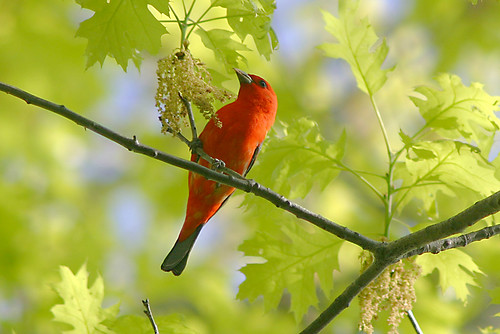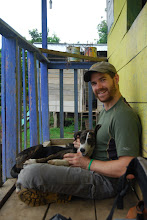I was feeling a little pressure to get a new post out for people to continue reading, so here it is. It is a continuation of Familiaris. I haven't done enough editing on it yet, so if you care to, please notify me of any mistakes/typos.
---
The closing year of high school brought massive changes to my life. At nineteen years old, I was slowly emerging from a rather tumultuous time in my life shadowed by pointless acts of vandalism and selfishness. Amidst the fading shame on my name and family, I found solace in being alone. For the first time in my life, a book brought me the relief I needed. The distant promise of college provided a means of escape; a place I could start over. My AP English reading list was one of the final important steps for me to take towards college. I still hated reading, and rarely read any book whatsoever. However, college was an unknown. It was a step towards a new challenge, and it scared me to think I may no longer be able to achieve good grades for little input. It would be necessary, so I was told, to begin studying more than ever before, and this meant reading.
So, I scanned the sterile white sheet AP reading list, and wandered through Border’s hoping something would be better than all the inane books we had read in school. Very basically, I believe you can judge a book by its cover. It was the books with the most enigmatic titles with intriguing covers that attracted me. I picked up Catch-22 - a simple cliché that I had heard many times, yet never understood. The cover had a matte finish, with simple white and blue borders, and some scribbled red cartoon of a man in the center. I didn’t know what it was, but it clearly meant something. This book opened the world of creativity to me. It was simply creative, yet gripping - a story based on a defining time in human history, which told a story through detailing the intricacies that bind people together through seemingly banal events.
I started the next book ten minutes after finishing Catch-22. I began reading in most of my classes, hiding my novels inside the textbook for each class as though it were some playboy I was hiding. Come Spring, I had read 56 books, and I felt like a new person. I had taken to wandering the nature section of Border’s, for I found more books there that detailed subjects I already knew well. I stumbled upon books by Tom Brown Jr, and this was the first time I came to understand that people could make a living and publish books based on their experiences in nature, all they need to do is detail them in an attractive way. These books returned me to my childhood, and soon I began to feel the anxious restlessness returning to my legs. I began to writhe in the chairs beneath my ass again. Whereas books had finally brought calm and stillness to my days, I could no longer focus, and the people surrounding me at Border’s began to draw my attention more than the pages before me. So, I began to read alone in my house, but when my family was home, I could not be left alone, and this in turn led me to the final escape that had cradled me so many times in my life – the woods.
Now in the spring of my final year of high school, I began a habit of packing a backpack with books and bread, and headed into the woods around my house after school and on the weekends. I would sit upright against the same oaks I would hunt from in the fall, but still my attention wavered. The stories of Tom Brown Jr. did more than return me to childhood memories; they turned me into a child again. These stories cultivated an excitement to reacquaint me with the secrets that hid in these woods.
With moccasins upon my feet, I would crawl across fallen trees, tracing the scratchy tracks of gray squirrels, following them through the forest, examining the remaining shells of acorns left in their wake. I would hold the shells close to my face until I could see the individual teeth marks where their sharp teeth incised the hard, polished shells. I began to find myself picking up acorns and biting them open. The bitter taste appalled me, and later when I would wash my hands in the sink at home, I understood why squirrels mouths were often so brown - not from the dirt from which they excavated their cache, but from the bitter tannins that stained my fingers brown for days.
I would hop from tree to tree as silently as possible. If I had to step upon the loud forest floor, I learned how to do so without creating an explosion of sound. I began to move quickly through the woods, sometimes unexpectedly coming up behind the animal whose tracks I was following. One time this led me to an abandoned hunting shack in the woods. I vacantly followed the tracks right up to within ten feet of the burrow opening that dove beneath the shack until I was stopped with a shudder at the sound of a loud exclamation. It was something between a horribly loud sneeze and a snarl. I jumped and spun around, looking behind me, then back into the dark burrow opening. I stood frozen as my heart began to pound in my ears. After one more horribly scarey ‘sneeze’ I backed away a few steps, turned, and ran fifty feet before stopping to watch the hole and to compose my pounding heart, but nothing came from the darkness. I walked away confused and scared for the first time ever in the woods. To this day I don’t know what that was.
A few weeks later I went into the woods again to wander and stalk. I went straight up the mountainside following deer trails, and inspected several well-worn buck rubs along the way. Being spring, none of them were fresh, but it was interesting to compare the difference in the bucks’ choices of trees, how heavily they damaged each small tree, and the designs that were left behind from their hormonal frustrations.
I followed the trails up to the ridge, where they dipped down towards a drainage on the wetter, northern side of the ridge. As usual, I passed between the trees my father and I had been hunting in together for years, looking momentarily up into my tree. A hook stuck out from the tree some twenty feet up, where I would hang my bow while awaiting a passing deer.
As the slope flattened out below our hunting spot, the trees grew smaller and the forest grew a bit darker.

Two hundred years ago these Pennsylvanian forests were nearly dark as night all day long. Towering hemlocks shaded bright orange clay-bed springs, where brook trout most likely lived long sheltered lives. Now there were gangly saplings of beech and tulip poplar amidst the young hemlock that were slowly succeeding in the wake of the heavy logging of the late 1800’s for which these Bald Hills got their name.
I followed the spring, jumping across from time to time to test my abilities. Bright orange slick spots, worn with hoof prints showed where some deer thought it easier to just walk through the chilling water than to jump. I looked around at the muddy deer paths that riddled this area, and watched the chickadees flit across the white sky from poplar to poplar, inspecting the dry, skeletal tulips for spider eggs.
Once I had followed the drainage far enough, I turned back to the south, and headed back up towards the ridge that would lead me homeward. The forest thickened with poplar and now oak joining in where the soil was slightly drier, but still quite wet. Pushing through thickets of rhododendron, I wiped cobwebs from my hair, and pushed on.

Emerging from one thicket I looked up to see a tall and slender bush of rhodo with pale pink trumpet-like flowers. I stopped in confusion, wondering what plant this was, and just then a hummingbird flew up. It was bright orange-red, with darker stripes on its body. I had seen some of these odd hummingbirds only twice before, when I was quite young, and they simply zipped into our yard, inspecting our hanging laundry before disappearing over the trees.
I walked up slowly, but the hummer didn’t seem to notice, or mind at least. As I approached to within a foot of the bush, it shot away to a neighboring bush, and I took the moment to jump into the center of the unoccupied bush in hopes that it would return. I stood motionless as I watched the hummer work through the fragile looking flowers, and all of the sudden it returned to the bush where I was standing. My face contorted into complete confusion as the hummer inches from my face transformed into some type of insect, or was it a moth? I leaned forward to the point where I could feel the air stirred from its wings tickling my nose. The front legs of the reddish creature reached out to the pink flowers as a dark tube unfurled from its head and plumbed the flower’s depth with the softness of an artist’s brush upon canvas. Having spent about two seconds per flower, the creature exhausted its options in less than a minute, and disappeared. While it was there, it stayed still enough at each flower for me to figure out with some assurance that it was apparently some type of moth.
I turned and started running home. I felt as though I had just identified a new species in the woods of Pennsylvania. No one had ever told me of this amazing creature, surely it was because no one had ever seen it. But indeed, this was not so. I first ran up to my room and opened my Audubon nature guide to the east. Leafing through the lesser-known pages where the insects were, there it was, the sphinx moth, but something wasn’t right. This one wasn’t the right color, and the one I saw had a more red body, and compact wings that I couldn’t even see. I turned the page and there was the one I saw - the clear-winged hummingbird moth.

I laughed out loud with a smile realizing that, judging by its name, I wasn’t the first to have such a confusing experience with this moth. The moth had a reddish body with clear wings! What an amazing thing, to live and play in these woods for nineteen years, and to still find things I never knew existed.
I leafed through the book, and found the plant that resembled the thick rhodo thickets that covered the lower north facing slopes. It was pinkster, a species of Kalmia, more commonly known as mountain laurel. I had never seen this plant before either. I felt like the woods had showed me some secret most people knew nothing about. I felt it was my secret, and to see pictures of these organisms in this book gave me a wider realization that there were other people out there who must have had these same experiences. This book became a passageway into new feelings of acceptance and inclusion into an unknown group of people. After that, I never went into the woods without that book. Someone had done a lot of work before me, and I was determined to learn it all, and luckily I had to be in the woods to do so.

















